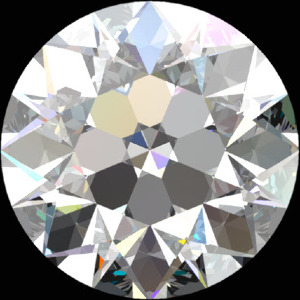slg47
Ideal_Rock
- Joined
- Apr 4, 2010
- Messages
- 9,667
ChunkyCushionLover|1291143640|2783021 said:I find the opinions expressed on PS over the years can be distilled down to "SuperIdeal HA Brand" vendors versus those who only sell non branded generic rounds. The former usually make comments justifying the price premium for their precision cut or carefully selected branded HA, the latter argue that the premium is not justified and their are no discernable differences.
I beleive both side can be "correct" and it really depends on which two diamonds are being compared on a case by case basis. Whether you side with either camp the greatest emphasis should still be placed on the choice of proper CA/PA and LGF combination with recognition that that grading reports information is an average of 8 values with severe rounding (especially in the case of LGF% which is in 5% increments for GIA) and no mention of precision which makes any comparisons between branded vs unbranded only a rough estimate if only comparing data from a grading report.
CCL
Yssie said:ChunkyCushionLover|1291143640|2783021 said:I find the opinions expressed on PS over the years can be distilled down to "SuperIdeal HA Brand" vendors versus those who only sell non branded generic rounds. The former usually make comments justifying the price premium for their precision cut or carefully selected branded HA, the latter argue that the premium is not justified and their are no discernable differences.
I beleive both side can be "correct" and it really depends on which two diamonds are being compared on a case by case basis. Whether you side with either camp the greatest emphasis should still be placed on the choice of proper CA/PA and LGF combination with recognition that that grading reports information is an average of 8 values with severe rounding (especially in the case of LGF% which is in 5% increments for GIA) and no mention of precision which makes any comparisons between branded vs unbranded only a rough estimate if only comparing data from a grading report.
CCL
Would be interesting to see a 'pepsi' test done w/ some of WF's ES near-H&A and their ACAs (though I'm quite sure of what the results would be!) both are branded, both brands carry a premium, both are (usually) well-cut to the same Tolk 'make' - or, there are enough samples present to make an interesting, if not statistically significant, comparison, and we have/are able to get light reflector info on all the stones

ChunkyCushionLover|1291394686|2786319 said:Slg47,
Regarding LGF's:
1) Karl's article is a good one but it focusses on the singular case of Steep Crown(CA=35) with Deep Pavilion(PA=41.25) where lengthening the LGFs from (80% to 83%) helps reduce leakage under the table. However that still doesn't make the diamond with PA 41.25 equivalent in performance to an Ideal Tolkowsky.
Karl_K|1291414435|2786716 said:ChunkyCushionLover|1291394686|2786319 said:Slg47,
Regarding LGF's:
1) Karl's article is a good one but it focusses on the singular case of Steep Crown(CA=35) with Deep Pavilion(PA=41.25) where lengthening the LGFs from (80% to 83%) helps reduce leakage under the table. However that still doesn't make the diamond with PA 41.25 equivalent in performance to an Ideal Tolkowsky.
It applies to any crown angle, the pavilion/lgf angles just change a little bit.
In what ways is it not equal? (btw I agree but I want to hear your reasons)

Karl_K said:Yssie, very good, you hit on part of the reason lets see what ccl comes up with then I will post some more.
You did hit on one key area and I will give you and ccl a hint, its about where the diamond draws light not so much where it returns it.


Lula|1290572236|2777704 said:Cut consistency is not about picture-perfect H&A, yssie -- in that respect I agree with you (in fact, I think it could be argued that Infinity
I'm hoping Andelain sees this thread, because she owns two 8-stars, one of which is an I2 clarity, and the other a VS clarity, so I'd be interested to hear her perspective on owning two stones from the same brand with very different clarity grades. Does she notice a difference in performance that she can ascribe to clarity.
